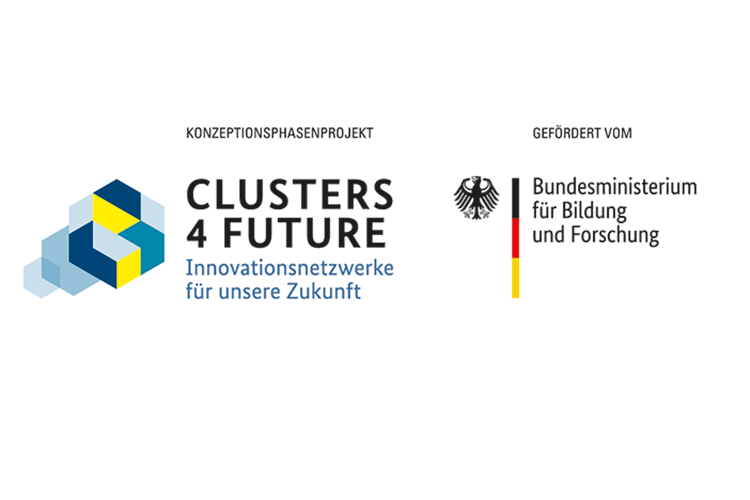
- Press
Using nanopores to detect epigenetic factors influencing disease
The cluster "nanodiag BW" is a finalist in the second BMBF competition "Clusters4Future"
From a total of 117 submitted competition entries, a jury recommended 15 proposals for funding for a conception phase, including the “nanodiag BW” cluster coordinated by Hahn-Schickard. The consortium of players such as University Medical Center, the University of Freiburg, the Max Planck Institute of Immunobiology and Epigenetics, Freiburg start-ups such as Ionera and Actome, as well as other partners from Baden-Württemberg, aims to research and apply nanopore technology for the molecular diagnostics of the future.
In nature, nanopores form channels on a molecular scale, for example through cell walls. Used in biosensors, they can be used to electrically detect and distinguish individual molecules. If individual biomolecules, for example ribonucleic acids, which transmit genetic information, move through a pore, their electrical conductivity changes. Such a change provides information about the type of biomolecule, its shape or sequence. The cluster hopes to use this technology to analyze short protein sequences and their modifications in the future, which are causally linked to diseases such as Alzheimer’s or cancer.
"The disruptive potential of this technology for medical diagnostics is internationally recognized but far from being realized,” states cluster coordinator adjunct professor Felix von Stetten, who, as institute director at Hahn-Schickard, is driving the development of mobile test systems for personalized diagnostics.
“So-called epigenetic factors, i.e. those that lie outside the genetic material, can change the effect of a gene and protein synthesis in such a way that cells, for example, in an uncontrolled manner or pathogens can penetrate a healthy cell more easily and quickly. An improved understanding of such influencing factors and better possibilities for their diagnosis could provide much more specific approaches to prevention and treatment than has been possible to date and thus significantly improve the health of citizens,” explains Prof. Dr. Jan Behrends from the Institute of Physiology at the University of Freiburg as deputy spokesperson of the consortium.
The new research field of nanopore technology is based on recent groundbreaking but untapped results of cutting-edge research with significant contributions from “nanodiag BW” stakeholders. It holds the potential to revolutionize health research, personalized diagnostics and prevention, and broad areas of biotechnology. Future nanopore technology-based applications address global health care challenges such as new diagnostic approaches and accelerated vaccine development as well as other key UN sustainability policy goals.
With the open-topic competition of the future cluster initiative “Clusters4Future,” the BMBF launched a new measure to strengthen knowledge and technology transfer in August 2019 under the umbrella of the High-Tech Strategy 2025. The aim is for relevant players from universities, research institutions, companies and social institutions in a region to join forces and work together optimally.
Download press release (PDF) in German
May, 11, 2021
BackContact

Competences
- PR at the branch in Freiburg
- Marketing
- Press + Media
- Events
Contact

Competences
- Hahn-Schickard Executive Board Member, Freiburg
- Lab-on-a-Chip
- Microfluidic assay automation
- Molecular and Point of Care Diagnostics
- Biosensors

